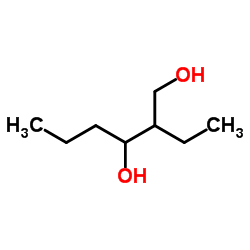Intralaboratory and interlaboratory evaluation of the EpiDerm 3D human reconstructed skin micronucleus (RSMN) assay.
Ting Hu, Yulia Kaluzhny, Greg C Mun, Brenda Barnett, Viktor Karetsky, Nathan Wilt, Mitchell Klausner, Rodger D Curren, Marilyn J Aardema, Ting Hu, Yulia Kaluzhny, Greg C Mun, Brenda Barnett, Viktor Karetsky, Nathan Wilt, Mitchell Klausner, Rodger D Curren, Marilyn J Aardema, Ting Hu, Yulia Kaluzhny, Greg C. Mun, Brenda Barnett, Viktor Karetsky, Nathan Wilt, Mitchell Klausner, Rodger D. Curren, Marilyn J. Aardema
文献索引:Mutat. Res. 673(2) , 100-8, (2009)
全文:HTML全文
摘要
A novel in vitro human reconstructed skin micronucleus (RSMN) assay has been developed using the EpiDerm 3D human skin model [R. D. Curren, G. C. Mun, D. P. Gibson, and M. J. Aardema, Development of a method for assessing micronucleus induction in a 3D human skin model EpiDerm, Mutat. Res. 607 (2006) 192-204]. The RSMN assay has potential use in genotoxicity assessments as a replacement for in vivo genotoxicity assays that will be banned starting in 2009 according to the EU 7th Amendment to the Cosmetics Directive. Utilizing EpiDerm tissues reconstructed with cells from four different donors, intralaboratory and interlaboratory reproducibility of the RSMN assay were examined. Seven chemicals were evaluated in three laboratories using a standard protocol. Each chemical was evaluated in at least two laboratories and in EpiDerm tissues from at least two different donors. Three model genotoxins, mitomycin C (MMC), vinblastine sulfate (VB) and methyl methanesulfonate (MMS) induced significant, dose-related increases in cytotoxicity and MN induction in EpiDerm tissues. Conversely, four dermal non-carcinogens, 4-nitrophenol (4-NP), trichloroethylene (TCE), 2-ethyl-1,3-hexanediol (EHD), and 1,2-epoxydodecane (EDD) were negative in the RSMN assay. Results between tissues reconstructed from different donors were comparable. These results indicate the RSMN assay using the EpiDerm 3D human skin model is a promising new in vitro genotoxicity assay that allows evaluation of chromosome damage following "in vivo-like" dermal exposures.
相关化合物
| 结构式 | 名称/CAS号 | 分子式 | 全部文献 |
|---|---|---|---|
 |
驱蚊醇
CAS:94-96-2 |
C8H18O2 |
|
Comparative sensitivity of four Anopheles (Diptera: Culicida...
1991-05-01 [J. Med. Entomol. 28(3) , 417-20, (1991)] |
|
The acute toxicity and primary irritancy of 2-ethyl-1,3-hexa...
1985-12-01 [Vet. Hum. Toxicol. 27(6) , 491-5, (1985)] |
|
Prevention of Lyme disease.
1992-05-01 [Am. J. Hosp. Pharm. 49(5) , 1164-73, (1992)] |
|
Pharmacokinetics of 2-ethyl-1,3-hexanediol. III. In vitro sk...
1995-11-01 [Fundam. Appl. Toxicol. 28(1) , 1-8, (1995)] |
|
Repeated exposure toxicity of 2-ethyl-1,3-hexanediol by cuta...
1995-02-01 [Vet. Hum. Toxicol. 37(1) , 33-6, (1995)] |